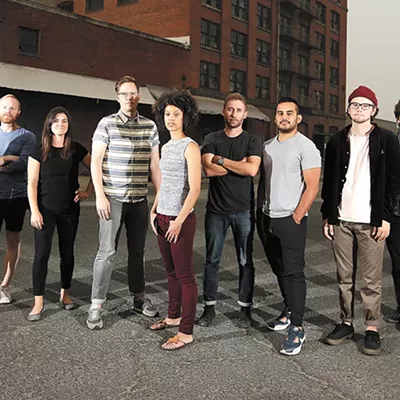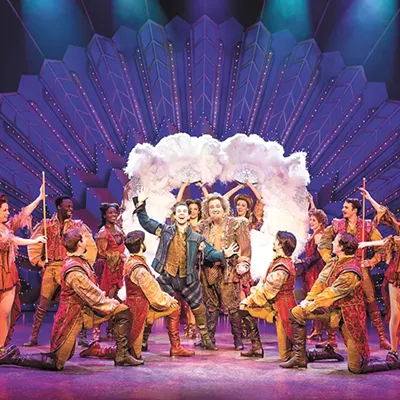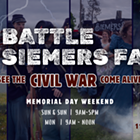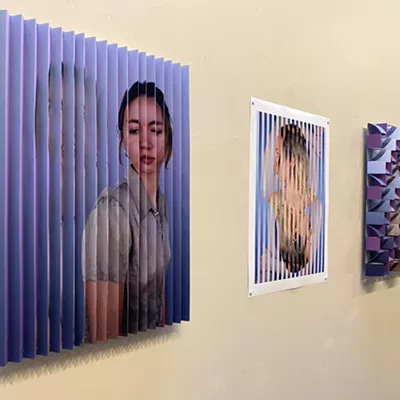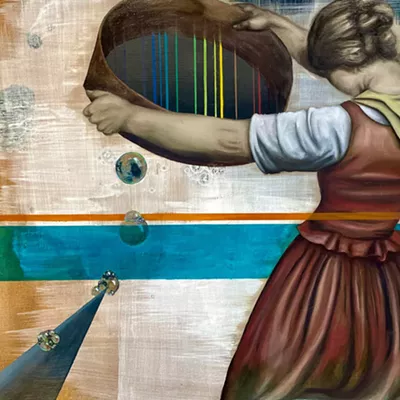
There are interesting parallels between the Northwest Museum of Arts and Culture's new director, Wes Jessup, and the story of the famed ocean liner at the center of the MAC's upcoming exhibition, Titanic: The Artifact Exhibition (October 2017-May 2018).
Like the captain of the Titanic, Jessup wants to not only keep the MAC afloat, but also navigate clear of potential hazards into safer territory. Past storms the MAC has weathered include budget cuts, a tenuous relationship with the state Legislature, frequent changeover from interim directors and unfilled or unfunded staff positions, and the contentious firing-rehiring-refiring of Jessup's predecessor, Forrest Rodgers.
"How do we keep the ship going forward and get out of this up-and-down cycle?" asks Jessup. "I look back on the history and I see a lot of that."
Like the ship's builder — Titanic was nearly 17 stories tall and three football fields long — Jessup has big ideas for what the MAC could be, including the impenetrable hull created by dedicated funding beyond what the Legislature provides. Last year, for example, the state covered nearly 60 percent of the museum's $3.9 million in expenses; the shortfall came from memberships, admissions, contributions, art sales and similar sources. Some positions, including an art curator, remain unfunded. With the MAC's three-pronged mission of promoting art, regional history and Native American culture, having insufficient staff is problematic, says Jessup.
"We have to find a way to be sustainable, and we have to continue to grow our relationship with the state of Washington," says Jessup, whose credentials include directing the Boise Art Museum, the Pasadena Museum of California Art, and Colorado's Longmont Museum and Cultural Center, where he's credited with doubling attendance during his six-year tenure.
Jessup is optimistic about the MAC's relationship with Olympia, and says that success isn't just about numbers, but about long-term relationships. In addition to building attendance and fundraising, Jessup is focused on community outreach and connecting with individuals with better two-way communication, more transparency and remaining relevant.
"I'm really interested in engaging people, and donors, and art collectors, and the tribes, in a process that gives everybody a voice and really sets a three-year goal for us," says Jessup, who will be spearheading a new, long-term strategic planning effort starting this month.
Jessup emphasizes the steps the MAC has made to be more transparent, with more accessible, easier-to-understand financial information and monthly, public board meetings. That transparency is reflected in programming, says Jessup, such as the MAC's "Secret Life of an Artifact," which gives viewers behind-the-scenes access to the museum's collections and processes.
Museum programming drives relevancy, says Jessup, who would love to see more locals regard the museum as an essential destination. "We don't want to be the best-kept secret," he says.
He's over the top about the Oct. 21 opening of Titanic: The Artifact Exhibition, which replicates the experience of being onboard the ship through artifacts, photographs and narrative elements. Learn about the ocean liner's construction, destruction, and resurrection from Arctic waters more than 2 miles down, and experience life onboard ship: what people wore and ate, how and where they slept, what they did for fun.
Programming includes speakers like Don Lynch, a historian with the Titanic Historical Society, author of Titanic: An Illustrated History, and assistant to Titanic movie director James Cameron. The MAC plans to bring in someone with experience diving the wreck site, partner with the Spokane Symphony on some musical events, and incorporate Spokane connections to survivors of the wreck. Senior history curator Marsha Rooney is combing the MAC's collections and tapping historically significant entities like the Historic Davenport Hotel to create a special companion exhibition called Spokane Circa 1912, which provides context regarding life during the time of the ship's construction and subsequent sinking.
At least one event will be held outside the MAC. On April 12, 2018 — the 106th anniversary of the disaster — the MAC will hold its annual gala at the Historic Davenport Hotel, whose history dates to the so-called Gilded Age. The formal event will feature the same 10-course meal as would have been served on the ship.
Jessup delivered this last piece of information with a little laugh, noting the irony in tying the gala to such an inauspicious date. Yet his optimism about the MAC's future overcomes any superstitions he might have. When the Titanic exhibition ends in May 2018, for example, Jessup will have been on the job a little more than a year, and will be thigh-deep into programming for late spring and summer 2018 exhibitions.
A retrospective of illustrator David Byrd's 50-year career opens June 8, 2018, featuring iconic images like the ones he created for Prince and the Jimi Hendrix Experience, and the theater poster for Godspell. Sayaka Kajita Ganz's Reclaimed Creations of animals in motion, fashioned from reclaimed plastic objects, opens June 9.
On June 15, Edward S. Curtis: 150 Years opens, featuring 100 images from the turn-of-the-century photographer's documentation of Native Americans, followed in the fall by a solo show highlighting work by Ryan Elizabeth Feddersen of the Confederated Tribes of the Colville Reservation (Okanogan/Arrow Lakes).
The 2019 programming returns viewers to icy northern territory with Into the Arctic, featuring 50 paintings by Canadian Cory Trépanier.
Even though the exhibition schedule is much more robust than when Jessup took the job, he aspires to generate exhibition content for future shows from within the MAC. "I'd love to see us doing stuff with our collections that are meaningful, not only to our museum but to other museums, potentially."
His vision — like the Titanic — is epic. "We have the opportunity to bring the world to Spokane," says Jessup, who would like to bring Spokane to the world as well. He believes in the MAC's potential as a leader in research, traveling exhibitions, connecting with tribes, and sharing its treasures with museums outside the region:
"I want to have the curatorial firepower to be able to generate content that is desired by other museums." ♦






